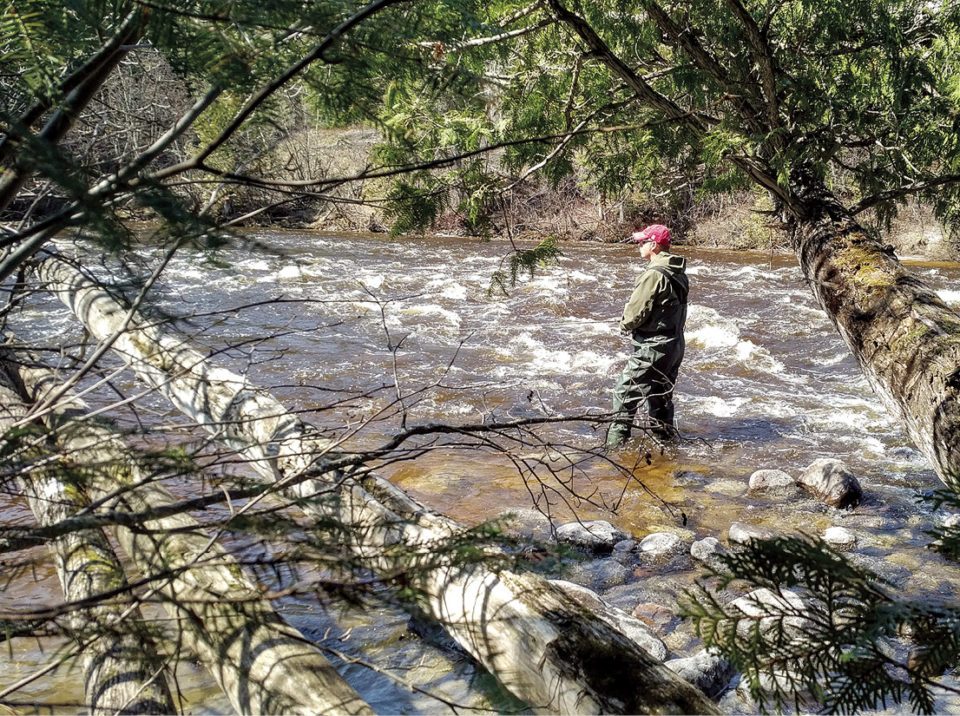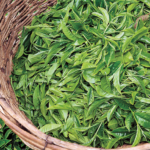One part of fishing that doesn’t get talked about much is wading. That may be because most anglers don’t need to wade to catch fish—they either angle from a craft such as a canoe, kayak or boat, or stand on a dock or shore. None of those angling locations really require wading. Yet if you are a steelhead angler, lake angler that shore casts or a fly fisherman that targets trout and other species in streams, wading is a big part of the game. For all those latter folks, here is a guide to wading and waders.
Types of Waders
There are really two basic types of waders. Hip waders are as advertised: they are waterproof coverings that will keep you dry to about the tops of your legs. Hip waders usually have the boot built into the wader. The typical hip wader is made of rubber and each one has a strap that wraps around your belt to keep them up. Chest waders provide more protection from water and will usually ride half-way up your chest. Chest waders come in both boot foot and stocking foot designs and are made from a wide range of materials. Rubber waders are the most common and cheapest, although they tend to be cold in the early season. Chest waders made of neoprene and are warmer, but have fallen out of favour in recent years. Most premium chest waders are now made of various breathable materials; Gore-Tex are the industry standard. Be prepared to pay a handsome price for them.
Stockingfoot waders require you buy wading boots as well. These boots come in a wide variety of designs and are also on the pricey side. Wading boots will also have a variety of soles available. Some have a rubber tread; others have a type of foam that grips well on slimy rocks. Some even have cleats. I like foam soles on stand-alone wading boots, but they are not great on snow. Bootfoot waders should not be too loose or there will be blisters. Boots for stockingfoot waders, on the other hand, need to be bought a size larger to fit the wader stocking and feet. If possible, don’t buy wading boots without trying them with the waders.
Wading Techniques
Wading is an art that almost everybody must learn on their own. If you have an experienced friend or family member, I’d recommend watching them closely and asking a few questions. My main advice is to go slow and be sure of your footing. Every year I see people take a cold plunge steelheading and that can end a fishing day quickly. Some anglers use a wading stick and that can provide you a pivot point and brace if you slip. I’ve always found wading sticks a tad awkward, as you have one hand holding a fishing rod and the other holding the stick. But to each their own. Take your time when wading and take small steps. Keep your feet slightly apart, but not so much that it feels awkward. Balance is everything when wading, so if you feel even slightly unstable, back out of the water. Many people wading for the first time will under-estimate the power of a current and how that can impact stability. Small rocks and sand also have a habit of being swept away underfoot and that creates its own set of problems.
Safety and Wading
While wading is generally a safe undertaking, it can also put you in situations that become potentially deadly quickly. For instance, more than once in my fishing career, I decided to wade across a river that was flowing high and found myself suddenly in danger. The situations varied, but they all added up to the same deadly possibilities. One time, I went over my waders due to an unseen pocket of deeper water. Another time, a chunk of ice came down the river from behind and nearly took me off my feet. Luckily, I was able to stay upright, but it easily could have gone the other way.
Crossing rivers is tricky and you must always remember if you are going across in one direction, you will have to come back. In the springtime, the water level of a river or creek can go up during the day, and that can make a spot that was wadable in the morning impassable in the afternoon. If you do get swept off your feet, the worst-case scenario is your waders fill with water. This creates an anchor effect that can turn deadly fast. All people in chest waders need to wear a belt of some type and cinch it up tight around your waist. This is not really an option for people in hip waders although some have a cinch at the top to make them tighter to the leg. It is a good idea to wear an inflatable personal flotation device (PFD) when wading, particularly on larger rivers or when fishing solo. Although it can be a bit awkward at first, the inflatables are streamlined and light. Some companies are incorporating the inflatable PFD into a fishing vest, which covers two uses at once. Every season, anglers from across North America drown due to a wading error or accident. A PFD reduces that chance.
Maintenance and Storage
Waders of all types need to be dried out and hung after each use. Waders that are wet and left in a sealed bag can mildew and even rot. When waders are being used a lot, carrying them in a permeable or mesh bag reduces the chance of mildew and allows air to circulate. I’d recommend putting high quality insoles in your bootfoot waders. These will keep your feet warmer and should be removed and dried after every use. Stand-alone wading boots should also be allowed to dry out after use, if possible. Check waders and boots for signs of cracks or abrasion. Generally, anglers learn the hard way about leaks in their waders. A patching kit or a rube of Aquaseal is a handy thing to have in your vest or fishing pouch for on the water mends.
Wading is a great tool for getting closer to fish and to accessing spots many others can’t. Just remember to take your time and always err on the side of caution. Don’t wreck a good fishing day with a bad choice.






